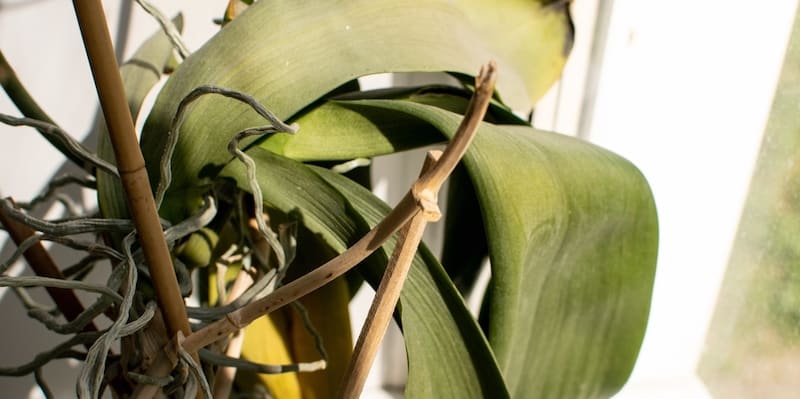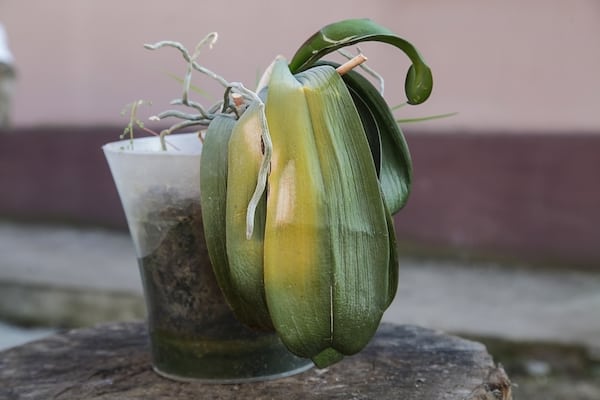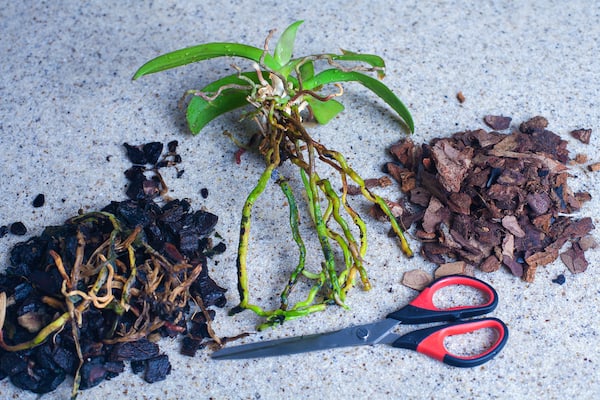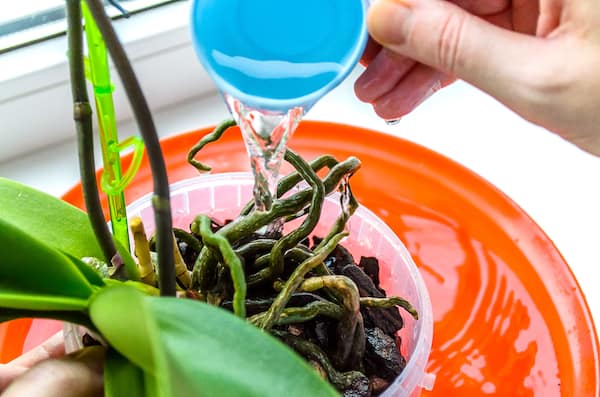
Preventing and treating orchid root rot and crown rot
Our site is reader supported, this means we may earn a small commission from Amazon and other affiliates when you buy through links on our site.
The key to preventing and treating orchid root rot and crown rot is regulating the amount of water the orchids receive. Over-watering, which often leads to root and crown rot, is the number one cause of death of orchids kept inside the home. As its name suggests, orchid root rot starts in the root and can then move further up your orchid stem; then, it becomes crown rot.
Here’s how from my own experience, I have managed to prevent and treat both of these diseases, but it starts with water control and growing conditions.
Orchid root rot
What is orchid root rot?
Orchid root rot is a fungal disease that moves into over-watered roots. Giving your roots too much water and not draining off the excess water leads to them becoming saturated. This prevents them from processing oxygen and from being able to circulate water and nutrients around the plant. It leaves then vulnerable to fungal diseases.
How to spot this?
The effect on the orchid’s leaves is that they turn yellow and wither, the same effect as under-watering your plant. If you notice this and ‘root rot’ springs to mind, you may be able to catch and treat the disease before it really takes hold of your plant. However, most people don’t find out about the problem until their orchid’s roots are swollen with water, turned brown or black, and dying.
How to treat root rot
Take your orchid plant out of its pot and place it on newspaper on a table.
Carefully remove all the orchid potting mix – it’s probably soggy and water-laden.
Check gently over the roots of the plant, looking for those you can save. The diseased roots are brown or black and squishy, and the healthy ones are silvery white or green and firm.
Sterilise your cutting tool and cut away all the diseased or dead roots.
Dry out the orchid pot. If your pot isn’t transparent, consider using a transparent one next so you can see into it and keep an eye on how the roots are doing in the future.
Prepare new orchid potting soil mix. Your previous mix recipe might have had too many ingredients that hold onto water, such as sphagnum moss or permeable clay. Adjust the ingredients if necessary with more items that drain the water away, so the mix doesn’t stay as wet.
Repot your orchid plant. See When and how to report an orchid for further details.
Orchid crown rot
How to spot orchid crown rot?
If the leaves at the base of your plant are droopy and breaking off, then root rot has moved up to the crown of your plant. (The crown is where the roots meet the stem.) The entire base of the orchid is black in this case. Crown rot can also occur on its own when water pools at the base of the leaves. This is an easier problem to fix.
How to spot this?
If the leaves at the base of your plant are droopy and breaking off, then root rot has moved up to the crown of your plant. (The crown is where the roots meet the stem.) The entire base of the orchid is black in this case. Crown rot may also occur when water pools at the base of the leaves.
How to treat crown rot?
Remove all affected leaves, but sterilise your cutting tool first.
If crown rot is there as a result of root rot, treat the root rot first.
To treat crown rot, apply some hydrogen peroxide to the crown of the plant. It bubbles up and fizzes. Repeat this every two to three days until it no longer bubbles.
Sprinkle cinnamon then onto the crown rot spot to stop the infection from returning. And keep that part of the plant dry from now on.
Preventing orchid root rot and crown rot
Preventing orchid root rot and crown rot is quite easy. Just be careful about when and how you water your orchid plant. Look out for the early signs that you’re overwatering your plant. And consider using the ice cube watering method if you just can’t help giving your orchid too much water.
The makeup of your orchid potting mix is also important. Some of the ingredients should hold water but it’s a balancing act between these and the other items that drain the water away. And the balance depends on your individual orchids. The article Do orchids need a special soil? explains all of this for you.
And consider air circulation. If the roots of your orchid plant are all squished together in a small pot, then repot it into a larger one. But don’t go too large, as this much potting mix can hold an excess of water – the problem we’re trying to avoid.


